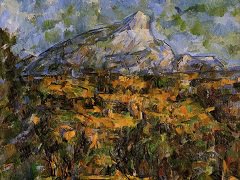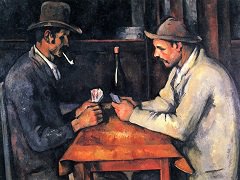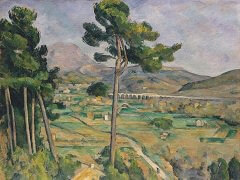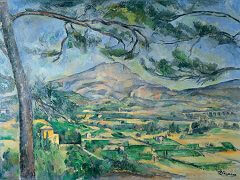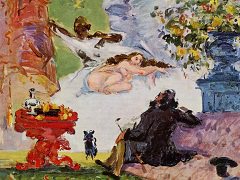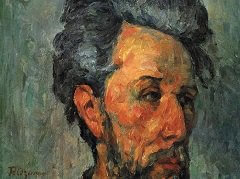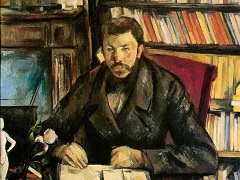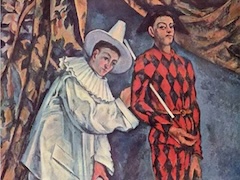The Great Pine, 1892 by Paul Cezanne
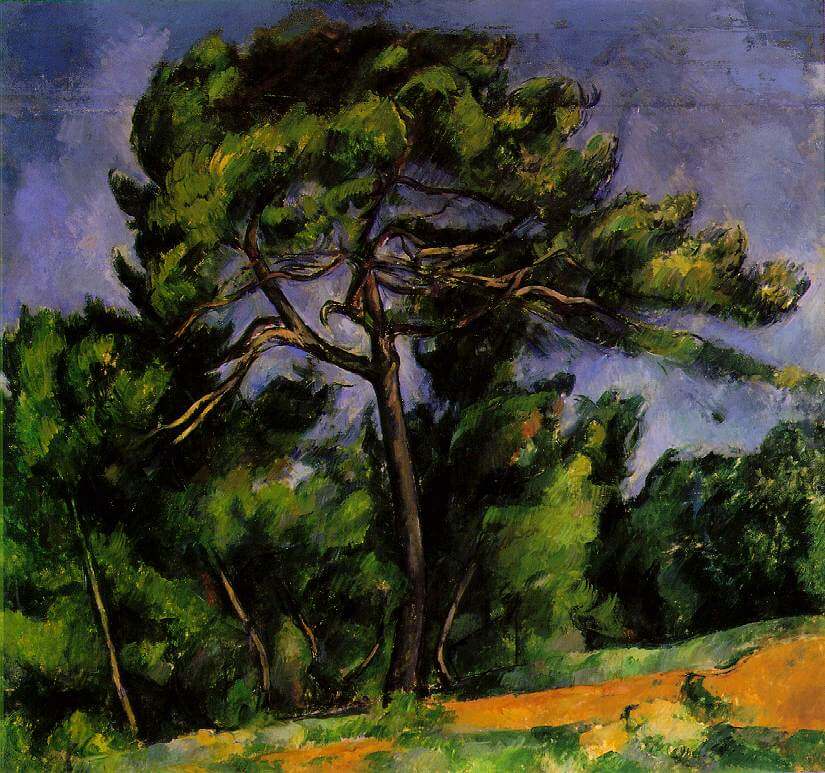
A poetic conception of the tree as a giant individual, rising to the heavens above the heads of its smaller fellows, twisted in axis and shaken by great forces, but supreme in its height and vast spread. Its rise from the ground is dramatic in its stages: through a sturdy bent trunk, far stronger than any other we see; through a region of bare and dying branches, leafless against the sky; then the great arched crown of foliage spanning almost the entire sky. The landscapists of the Romantic school, Huet and Dupre, had painted similar heroic trees, but the stormy sky and tormented ground in their pictures are a more obvious external motivation of the agony of the tree.
In Cezanne's picture, the drama is in the tree itself, with its strained, conflicting forms, reacting to the wind. With a remarkable simplicity that often passes for naivete but is the wisdom of great art, he presents his vision of the tree in the clearest way, placing the tree in the center of the field directly before us. But he knows how to use the surrounding elements to support the drama. The ground slopes and the other trees are inclined away from the big trunk as if they have been parted by the giant's upward movement. We see no branches beside those of the central tree; its torment and spread are a unique fact.
The Great Pine, 1892, is a beautiful harmony of blues and greens, in which the occasional warm touches in the branches and foliage pick up the strong ochre band of the road.
Simple and perfectly legible, it has also a great vitality and movement through the brush strokes. With few lines, they create by their changing directions a perpetual stirring of the space, great eddying currents, winds, and turbidities. Yet they resolve into a few large masses of color.


